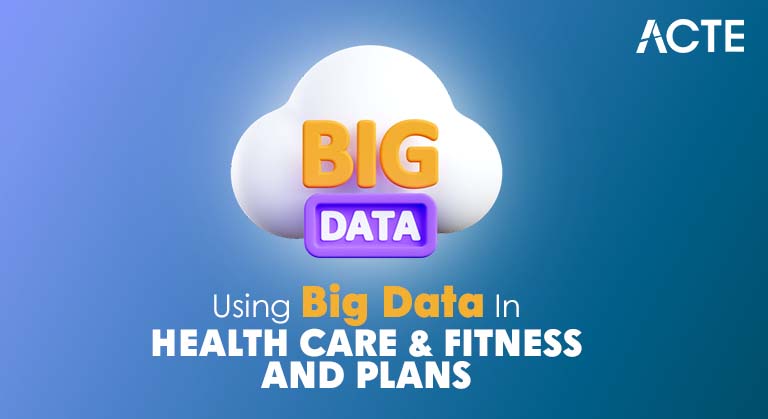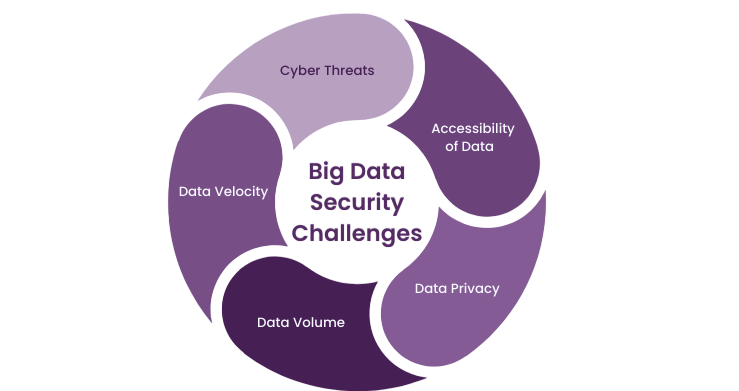
- Overview of Big Data in Healthcare and Fitness
- Sources of Health and Fitness Data
- Role of Wearable Devices and IoT
- Data Analytics for Personalized Fitness Plans
- Predictive Analytics for Disease Prevention
- Nutrition Tracking and Big Data
- Mental Health Insights through Data Analysis
- Challenges in Collecting and Using Health Data
- Privacy and Security Concerns
- Big Data Impacting Health Outcomes
- Future Trends in Big Data for Fitness
- Conclusion: Big Datas Role in Healthy Living
Overview of Big Data in Healthcare and Fitness
Big Data is revolutionizing healthcare and fitness by providing a comprehensive and data-driven understanding of human health. In the digital era, vast amounts of information are generated daily from medical devices, mobile apps, electronic health records (EHRs), and wearable fitness trackers. Big Data is revolutionizing healthcare by enabling smarter diagnostics, real-time health monitoring, personalized treatment, and proactive preventive care. At the heart of this transformation lies Database Training, equipping professionals with the skills to manage and analyze massive datasets that traditional tools can’t handle. The fusion of data analytics with health and fitness enables evidence-based decisions and improved outcomes, marking a paradigm shift from reactive to proactive healthcare.
Do You Want to Learn More About Database? Get Info From Our Database Online Training Today!
Sources of Health and Fitness Data
The explosion of health-related data comes from numerous sources: In the rapidly changing area of healthcare technology, patients are changing patient care with digital changes connected to data systems. Electronic Health Records (EHRS) now serve as a digital store of the patient’s information, which are integrated with new devices such as wearable equipment and mobile health apps. Smartwatch and fitness bands track significant health matrices such as physical activity, heart rate and sleep patterns. Meanwhile, MHEALTH app offers detailed diet tracking, fitness monitoring and telemedicine consultation. Medical imaging techniques such as X-rays, MRIs, and CT scans produce a lot of clinical data, as well as genomic sequencing that supports individual medication. Clinical testing and research studies connect this data network by collecting structured information that fuels medical progress, and Data warehouses and models are instrumental in organizing and interpreting these datasets to drive impactful healthcare decisions. Insurance claims and billing records also add a financial aspect to healthcare, there is a complete digital structure that improves the patient’s care, research abilities and operational efficiency in the medical field. All these sources, when integrated and analyzed, provide a holistic view of an individual’s health status and lifestyle.
Role of Wearable Devices and IoT
Wearable technology and the Internet of Things (IoT) play a pivotal role in modern fitness and health monitoring, and Become a Data Modeler is a crucial step toward designing efficient systems that translate raw sensor data into meaningful health insights. Devices like Fitbit, Apple Watch, Garmin, and smart scales continuously collect data on steps, calories burned, heart rate variability, blood oxygen levels, and more.
The advantages include:
- Real-time monitoring: Enables early detection of abnormalities.
- Remote patient management: Particularly useful for elderly or chronically ill individuals.
- Encouraging physical activity: Gamification and reminders motivate users to stay active.
- Integration with EHRs: Facilitates personalized healthcare planning.
IoT in healthcare includes smart thermometers, blood pressure monitors, ECG trackers, and even smart pill dispensers. These tools contribute to massive data generation, which can be mined for insights using Big Data analytics.
Data Analytics for Personalized Fitness Plans
One of the most impactful applications of Big Data in fitness is the ability to generate tailored fitness plans. Traditional fitness routines are often generic, but data analytics changes this by considering:
- Age
- BMI (Body Mass Index)
- Medical history
- Activity level
- Nutrition
- Sleep patterns
Using machine learning algorithms, apps and platforms can recommend workouts, rest intervals, recovery strategies, and even adjust plans dynamically based on ongoing performance. Examples include:
- AI fitness coaches like Freeletics and Vi Trainer
- Workout optimization tools such as WHOOP and Oura Ring
- Digital therapeutics platforms for obesity and diabetes management
Personalization maximizes results and minimizes risk, ensuring that users work out smarter, not harder.
Would You Like to Know More About Database? Sign Up For Our Database Online Training Now!
Predictive Analytics for Disease Prevention
Predictive analytics is a critical Big Data application that forecasts future health outcomes based on current and historical data. By analyzing trends and patterns, healthcare providers can predict and prevent potential diseases. Machine learning and artificial intelligence are the better future and are changing healthcare with clinical capabilities. By using complex algorithms and detailed data analysis, these technologies allow for groundbreaking applications in various medical fields. Researchers can now predict the risk of heart disease by examining ECG and heart rate variability data. By enabling healthcare professionals to assess genetic markers, physical activity, and dietary patterns, Database Training plays a crucial role in evaluating the capacity and progression of type 2 diabetes.

Additionally, these methods improve cancer detection with better imaging and genomic techniques. These new approaches also help in managing chronic diseases by looking at subtle initial warning signals. It empowers healthcare professionals to provide more individual and preventive treatment strategies. Hospitals and fitness centers can integrate such tools to track patient populations and alert healthcare professionals to intervene early. AI models can flag high-risk individuals long before symptoms appear, making preventive care a reality.
Nutrition Tracking and Big Data
Nutrition is a fundamental pillar of fitness and overall well-being. With the help of Big Data, nutritional habits are no longer anecdotal; they can be quantified, analyzed, and optimized. Big data is changing nutrition with new technology that provides individual dietary insights. Dietary tracking apps such as MyFitnessPal, Cronometer, and Yazio help people analyze their nutritional intake with great accuracy, and A Complete Guide on SQL Optimization is key to ensuring these platforms run fast, scale efficiently, and deliver insights in real time. Along with these apps, food scanners use complex algorithms to assess food and estimate the calorie count, giving users immediate nutritional information. Additionally, genetic nutrition platforms such as nutrigenomics have emerged, using DNA analysis to suggest diet strategies based on a person’s unique genetic makeup. These technologies benefit from the crowdsourced database that collects food label information, data presented by the user, and comprehensive barcode scanning features. This creates a lively and associated system of nutritional information that helps people to make better health choices. Advanced algorithms analyze user input and compare it with dietary goals, allergies, or health conditions to provide smart suggestions. Over time, these apps learn from user behavior and become more accurate.
To Earn Your Database Certification, Gain Insights From Leading Blockchain Experts And Advance Your Career With ACTE’s Database Online Training Today!
Mental Health Insights through Data Analysis
As mental health gains overdue attention in the Big Data era, Database Administration becomes essential for organizing vast datasets that uncover patterns in mood disorders, stress levels, and cognitive decline through advanced analytics.
Sources of mental health data:
- Sleep and activity patterns: Changes can indicate anxiety or depression.
- Social media behavior: Text analysis identifies language indicative of mental distress.
- Wearables: Stress sensors (e.g., EDA on Fitbit), HRV, and skin temperature.
- Voice analysis: Detects mood shifts through tone and pitch.
Applications:
- Mental health chatbots: Woebot and Wysa.
- Digital therapy platforms: Headspace and Calm.
- Real-time mental health dashboards: Used by therapists and counselors.
Data-driven mental health monitoring offers early detection and continuous support, especially in remote or underserved regions.
Challenges in Collecting and Using Health Data
Despite its promise, health data collection comes with significant challenges:
- Data fragmentation: Disparate sources and formats make integration difficult.
- Inconsistent quality: Wearable data may be inaccurate or inconsistent.
- Data overload: Volume can be overwhelming without proper filtering.
- User engagement: Long-term adherence to tracking apps/devices is low.
- Interoperability: Lack of standards hinders seamless data exchange.
To address these, developers and policymakers must focus on standardization, robust validation, and user-centric design.
Preparing for a Database Job? Have a Look at Our Blog on Database Interview Questions and Answers To Ace Your Interview!
Privacy and Security Concerns
Health and fitness data are sensitive and highly personal. The more data is collected, the higher the risk of breaches, misuse, or unethical surveillance.
Key concerns:
- Unauthorized access: Hacking or data leaks.
- Data ownership: Users often lack control over their data.
- Consent and transparency: Users may not fully understand how data is used.
- Profiling and discrimination: Employers or insurers could misuse health insights.

Regulations like GDPR (General Data Protection Regulation), HIPAA (Health Insurance Portability and Accountability Act), and India’s DPDP (Digital Personal Data Protection) aim to address these concerns. However, enforcement and user education remain critical.
Big Data Impacting Health Outcomes
Using data analysis and automatic learning, new medical care programs are changing custom medical interventions worldwide. By integrating massive datasets from genomic sequencing and electronic health records, the Mount Sinai Bioma program showcases the value of Comparing Redis vs MongoDB to identify optimal data structures for scalable, real-time analysis in medical research. This research discovered key cardiovascular risk patterns between ethnic minorities. In a similar line, the National Health Service of the United Kingdom used automatic learning strategies that significantly reduced non -planned hospitalizations by 20%. This shows how predictive medical technologies can make a difference. In addition, Fitbit’s COVID-19 study used portable technology to detect early physiological changes while working with health organizations to improve public health responses. In India, Goqii has brought even more personalized medical attention by offering well -being plans that combine ideas driven by AI with human training, helping to handle chronic diseases effectively. These initiatives together show a new way of addressing medical care. Data -based technologies support more precise, proactive and individualized medical strategies that focus on early detection, prevention and personalized treatment methods. These examples illustrate how integrating Big Data with healthcare leads to better outcomes, increased efficiency, and personalized care.
Future Trends in Big Data for Fitness
Looking ahead, several trends will shape the next decade of Big Data in fitness:
- AI-Powered Virtual Coaches: Enhanced personalization using generative AI.
- Digital Twins: Virtual replicas of individuals used for simulation and diagnosis.
- 5G and Edge Computing: Real-time analytics at the device level.
- Precision Fitness: Merging genomics, lifestyle, and sensor data.
- Smart Clothing: Embedded sensors in fabrics tracking posture, movement, and vitals.
- Interoperable Ecosystems: Platforms that unify data from various devices and health systems.
These innovations promise a future where fitness and healthcare are predictive, preventative, and precisely personalized.
Conclusion In Big Datas Role in Healthy Living
Big Data is fundamentally reshaping how we understand, monitor, and improve our health. From tracking physical activity and analyzing nutrition to predicting diseases and supporting mental health, the integration of Big Data into fitness and healthcare ecosystems offers immense potential. Empowering professionals to navigate vast and complex data landscapes, Database Training lays the foundation for transformative Big Data applications. However, its success depends on ethical use, secure data handling, user education, and technological interoperability. By harnessing Big Data responsibly, we move closer to a world where healthy living is guided not by guesswork, but by real-time, personalized, and actionable insights. This convergence of technology and wellness empowers individuals to take charge of their health like never before.


